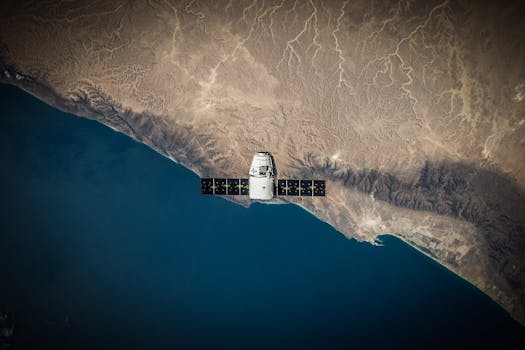
MEO Satellites: Revolutionizing Global Connectivity with Medium Earth Orbit Technology
MEO satellites, or medium earth orbit satellites, are a type of satellite that operates in an orbit between 2,000 and 36,000 kilometers above the Earth’s surface. This orbit is higher than low earth orbit (LEO) satellites but lower than geostationary orbit (GEO) satellites. MEO satellites are gaining popularity due to their unique advantages, which make them an attractive option for various applications, including navigation, communication, and Earth observation.
The focus keyword MEO satellites is used to describe the technology that enables global connectivity. MEO satellites have several benefits, including lower latency, higher signal strength, and improved coverage. They are also less prone to interference and have a longer lifespan compared to LEO satellites. Additionally, MEO satellites can provide more precise location information and have better visibility of the Earth’s surface, making them ideal for applications such as navigation, mapping, and Earth observation.
Applications of MEO Satellites
MEO satellites have a wide range of applications, including navigation, communication, and Earth observation. In the navigation sector, MEO satellites are used in satellite-based augmentation systems (SBAS) to provide precise location information and improve the accuracy of GPS signals. They are also used in mobile satellite services (MSS) to provide voice and data communication services to remote areas where terrestrial infrastructure is limited.
In the Earth observation sector, MEO satellites are used to collect data on the Earth’s surface, including weather patterns, ocean currents, and land use. They are also used in disaster response and recovery efforts to provide critical information and communication services. Furthermore, MEO satellites are used in the internet of things (IoT) to provide connectivity to devices in remote areas and enable real-time data transmission.
Benefits of MEO Satellites
MEO satellites offer several benefits, including lower latency, higher signal strength, and improved coverage. They are also less prone to interference and have a longer lifespan compared to LEO satellites. Additionally, MEO satellites can provide more precise location information and have better visibility of the Earth’s surface, making them ideal for applications such as navigation, mapping, and Earth observation.
The lower latency of MEO satellites is due to their closer proximity to the Earth’s surface compared to GEO satellites. This results in faster data transmission and reception, making them ideal for real-time applications such as voice and video communication. The higher signal strength of MEO satellites is also due to their closer proximity to the Earth’s surface, which results in a stronger signal and better coverage.
Challenges and Future Developments
Despite the benefits of MEO satellites, there are several challenges that need to be addressed. One of the main challenges is the high cost of launching and operating MEO satellites. Additionally, MEO satellites are subject to interference from other satellites and terrestrial systems, which can affect their performance. Furthermore, the orbital congestion in the MEO region is a growing concern, which can lead to collisions and other safety risks.
To address these challenges, several developments are underway. The use of advanced propulsion systems and launch vehicles is expected to reduce the cost of launching MEO satellites. Additionally, the development of new antenna technologies and signal processing algorithms is expected to improve the performance of MEO satellites and reduce interference. Furthermore, the implementation of satellite-based systems for traffic management and collision avoidance is expected to improve the safety and efficiency of MEO satellite operations.

